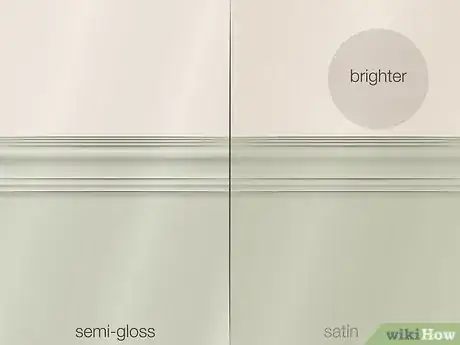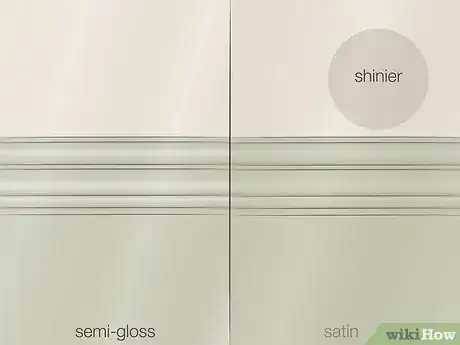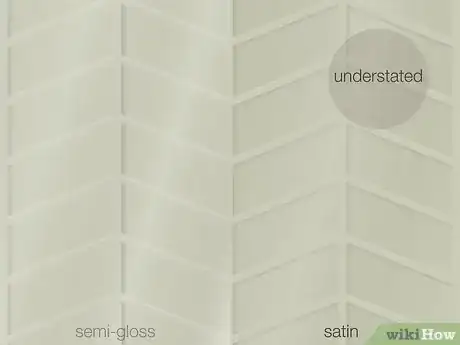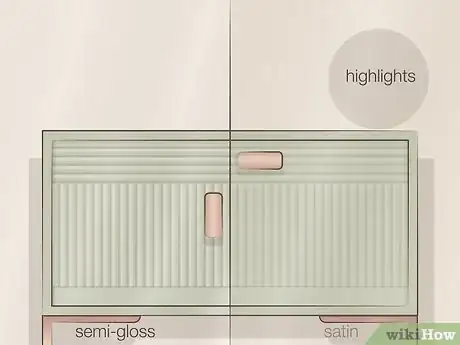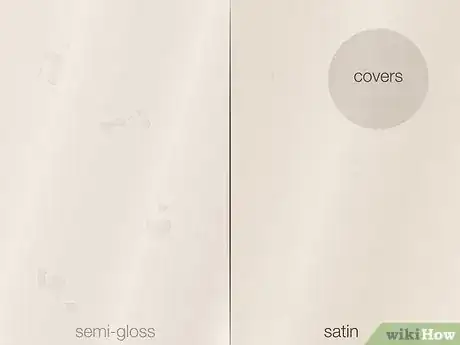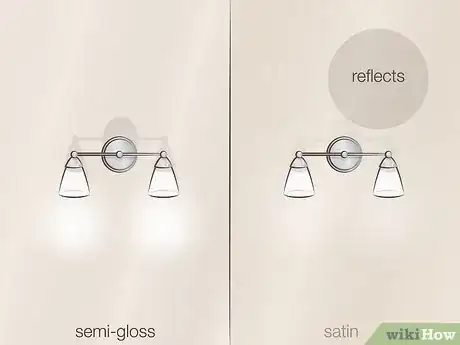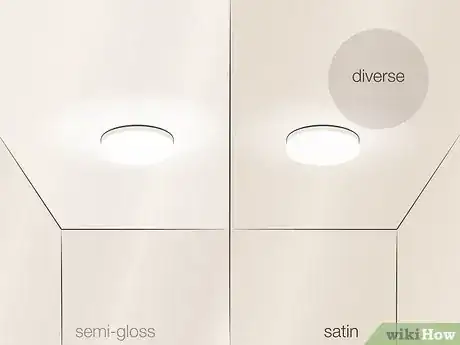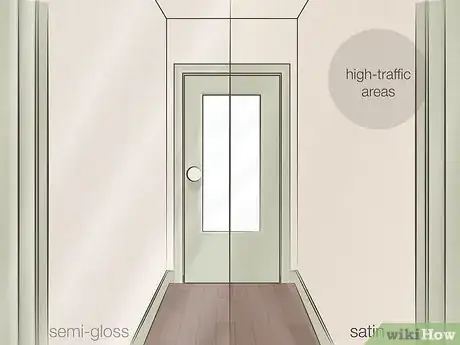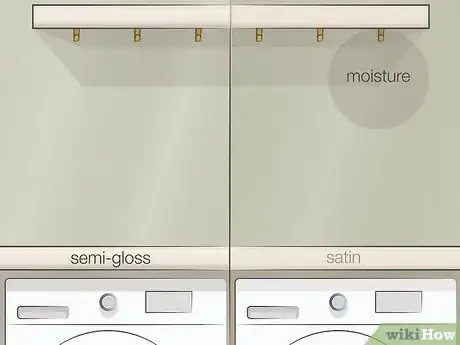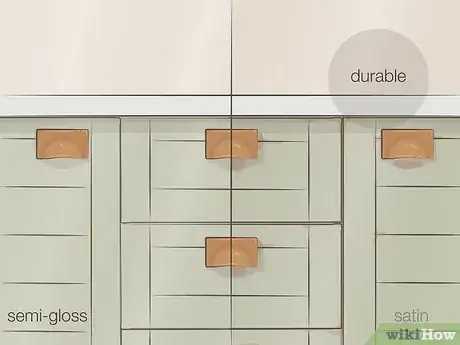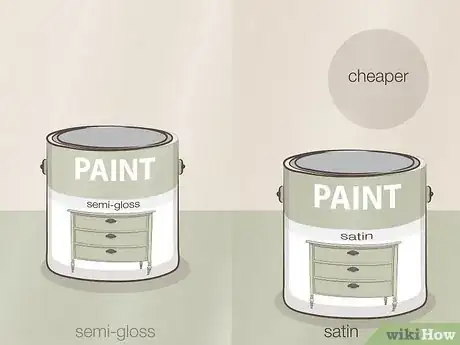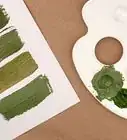This article was co-authored by wikiHow staff writer, Finn Kobler. Finn Kobler graduated from USC in 2022 with a BFA in Writing for Screen/Television. He is a two-time California State Champion and record holder in Original Prose/Poetry, a 2018 finalist for the Los Angeles Youth Poet Laureate, and he's written micro-budget films that have been screened in over 150 theaters nationwide. Growing up, Finn spent every summer helping his family's nonprofit arts program, Showdown Stage Company, empower people through accessible media. He hopes to continue that mission with his writing at wikiHow.
There are 8 references cited in this article, which can be found at the bottom of the page.
Learn more...
So you’re painting, and you want something that’s not too shiny but still makes your room or surface feel friendly and inviting. Both satin and semi-gloss are great choices. They’re both affordable, middle-of-the-road in sheen, and suitable for a wide array of spaces. However, their subtle differences may make it hard to differentiate one from the other. Don’t worry; we’ve got you covered. In this article, we’ll talk you through all the differences between satin and semi-gloss paint to make it clear which one you should purchase and when.
Steps
What’s the difference between satin and semi-gloss paint?
-
Semi-gloss has a much brighter and more noticeable sheen than satin. Light reflects off of semi-gloss easier than satin, since satin has a flatter finish. This makes semi-gloss a more appropriate paint for the fine trimmings of your house: railings, cabinets, crown molding, etc. Satin, on the other hand, with its slightly more matte appearance, is better for large surfaces with more noticeable flaws: walls, floors, counters. Semi-gloss makes darker spaces feel warmer. Satin mutes areas where glare and brightness may feel too intense.[1] X Research source
Visual Differences
-
1Semi-gloss is shinier. Semi-gloss is made with a higher percentage of gloss-mixture, making it smoother and more lustrous. This bright sheen helps spaces feel more formal.[2] X Research source
- For the smoothest effect, apply multiple thin coats of semi-gloss finishing paint instead of just one thick coat.
-
2Satin is more understated. Satin paint contains more flattening paste which means it has a slightly duller appearance than semi-gloss. This soft, more pearl-like luster gives it a more chic and modern feel.[3] X Research source
-
3Semi-gloss draws more attention. Because semi-gloss is brighter, it highlights surfaces more acutely. If you have a gorgeous hardwood floor or ornate cabinet you really want to show off, semi-gloss paint will help it stand out.[4] X Research source
-
4Satin is better at covering imperfections. If your walls or furniture have a bit of natural wear-and-tear that you don’t want people to see, satin’s more toned-down polish helps hide these scuffs and bruises.[5] X Research source
-
5Semi-gloss reflects more light. Semi-gloss’ high radiance attracts large amounts of light. This can give surfaces a gorgeous glow, but means it should be avoided in spaces that attract lots of glare.[6] X Research source
-
6Satin is more diverse. Because satin’s sheen is less obvious, it’s a more easily-applicable coat for different surfaces. It can add a good flair to ceilings and hallways without capturing the same amount of light as semi-gloss.
Uses for Each Paint
-
1Satin is good for high-traffic areas. Satin is a great paint for rooms that people go in and out of often. Living rooms, dining rooms and hallways experience a lot of regular foot traffic and are more likely to get dirty. Satin’s ability to hide marks makes it a great choice for these spaces. It also works great for bedrooms where semi-gloss’ high sheen may feel overwhelming.[7] X Research source
-
2Semi-gloss is good for areas with lots of moisture. Semi-gloss paint is exceptionally good at combating mildew and mold. Laundry rooms, bathrooms, basements, and other areas that get damp easily will benefit tremendously from a semi-gloss finish.[8] X Research source
- In addition to its functional, moisture-combating purposes, semi-gloss’ natural gleam gives it an elegance that can upgrade any room or object.
Durability and Clean-Up
-
1Semi-gloss is slightly more durable. While both satin and semi-gloss are durable, semi-gloss is more damage-resistant to sun, rain, grease, and wind.[9] X Research source
-
2Semi-gloss is easier to clean. “The higher the sheen, the easier to clean!” Semi-gloss is easily washable and more resistant to stains. Surfaces that get dirty easily like playrooms and pet-friendly spaces will be easily protected by a semi-gloss finish.[10] X Research source
Pricing
-
Satin is slightly cheaper. Paints with radiant sheens usually cost roughly 2-3 dollars more per gallon. This means that, while the cost difference isn't major, satin is the less-expensive of the two.[11] X Research source
You Might Also Like




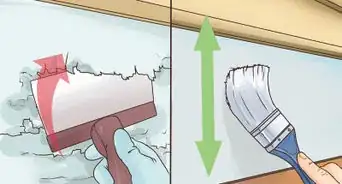
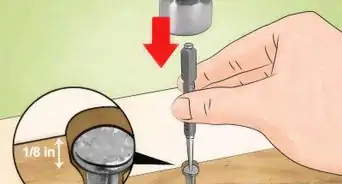


References
- ↑ https://homeinspectioninsider.com/satin-vs-semi-gloss-paint/
- ↑ https://www.housedigest.com/772195/whats-the-difference-satin-vs-semi-gloss/
- ↑ https://eastbay.floorcoveringsinternational.com/articles/satin-vs-semi-gloss-hardwood-finishes/
- ↑ https://www.pipsisland.com/satin-or-semigloss-for-kitchen-cabinets/
- ↑ https://www.elledecor.com/design-decorate/interior-designers/a31080349/satin-vs-semi-gloss/
- ↑ https://homeinspectioninsider.com/satin-vs-semi-gloss-paint/
- ↑ https://painttopics.com/satin-vs-gloss-finish/
- ↑ https://www.homeadvisorhomesource.com/perfect-paint-finishes-for-moisture-prone-rooms/
- ↑ https://www.paintspraypro.com/satin-vs-semi-gloss/
About This Article

